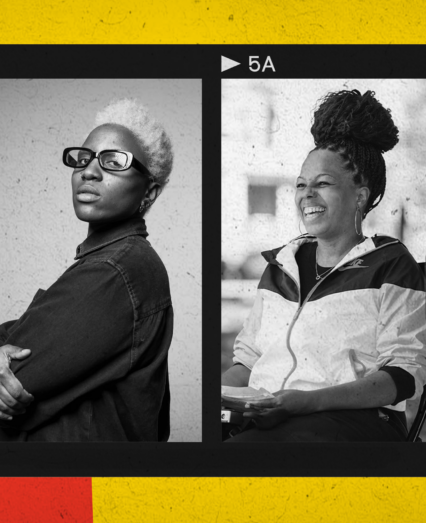Every advocacy or cause awareness campaign has its differences. But whether your cause is raising awareness about climate change, raising money to fight poverty, or simply campaigning to get votes for a specific political candidate, every campaign also has a couple of things in common.
First – and most obviously – they all have a specific issue that is central to their mission. They all, in some way or another, aim to make the world a better place by raising awareness and/or proposing solutions that address that issue.
Secondly, they can all begin on the path to a successful campaign by incorporating the following five components into their digital and overall campaign strategies.
1. Strong Branding
Strong branding for an advocacy campaign goes well beyond color palettes and fonts incorporated into advertising materials. When you are branding an advocacy campaign, it is imperative to consider that you are not just branding yourself as an organization, rather you are branding the issue that is central to your organization’s mission.
In an effort to name and frame that issue thoughtfully, ask yourself some of the following questions:
- Who are we talking to and what are we telling them?
- What do we want our audience to feel about the issue?
- What do we want them to do about the issue?
How you brand an issue will ultimately shape the way it is discussed in all future material. Consider phrases like “Black Lives Matter” or “a living wage” and the ways in which their naming and framing has impacted the conversation over the course of their existence.
2. A Resource & Information Hub
We applaud @SenBlumenthal and his colleagues for honoring the victims and survivors of gun violence with #MoreThanThoughtsAndPrayers by taking action to close the Charleston loophole.
Read our full statement. https://t.co/wVULM905hk
— Everytown (@Everytown) March 4, 2021
Something else that most, if not all, advocacy campaigns have in common is that they all have a wealth of information and/or resources that they are looking to get in front of their target audiences. This could be:
- Educational material about the issue at hand
- Information about how and where to donate to the cause
- Resources for engaging in the community
- Background about the organization and its efforts
The most essential tool to house all of this information is a neatly organized website or microsite specific to the campaign. When wireframing a microsite, think of it as your resource and information hub with tabs and pages laying out all of the above information.
3. Dynamic Content Designed for All Platforms
https://youtu.be/dHdz2rjBgzI
This component is a key to getting users over to that resource hub to learn more about your cause. Creating high-impact visual content that pulls on the heartstrings, creates urgency, and/or generally compels users to learn more about your cause is incredibly important.
Because getting back to your resource hub is the goal, every piece of content doesn’t need to say everything. It should simply be thought of as a highly-dynamic teaser for a more detailed message on your website – where they can learn more and maybe even donate. As much as possible, content should be resized, reformatted, and re-messaged for every platform to get the most legwork out of it. Ask yourself:
- How can this gif I made for Twitter be updated for programmatic display ads?
- How would the voiceover from this explainer video I made for Facebook work as a streaming audio ad?
- How would this video I shot for OTT/CTV look on my YouTube channel?
Content is king and the more of it you put out there, the more awareness and action you will generate for your campaign.
4. Influencer Marketing
COVID-19 has changed everything for the children – the way they learn, play with friends and even their ability to get healthy food.
Join us and @enriqueiglesias to create positive change for children in the U.S. and around the world. Donate today: https://t.co/MUh2f3XePE pic.twitter.com/9tScV49Ejy— Save the Children US (@SavetheChildren) December 2, 2020
Influencers can be great partners for brands when it comes to generating awareness for products. But what about for advocacy campaigns? If partnerships are implemented thoughtfully, influencer marketing can have a tremendous impact. Begin by asking yourself the following:
- Does the influencer’s brand align with the efforts of your organization? How do you know?
- Will the content you’d have them publish mesh well with their other regularly scheduled programming?
- Would they consider lending services at potentially reduced rates in an effort to support a good cause?
If the answer is “yes” to all of the above, then you’re off to a great start!
5. Direct Emails
#GivingTuesday is just ONE WEEK AWAY! Don’t miss your chance to double your impact for hungry families. Sign up for emails from Feeding America today: https://t.co/pSBUhRPONq pic.twitter.com/b8S9A2zzH2
— Feeding America (@FeedingAmerica) November 26, 2019
Lastly, incorporating regular email blasts in your advocacy campaign’s digital strategy offers perhaps the most direct way to engage your audience. Think of your email blasts as the place where all of the prior points come together. It’s a highlight reel where your best content and most crucial updates can be neatly laid out (linking back to your resource hub!) and sent directly to people’s inboxes.
This is an important point: Do not abuse the e-blast! If you’re sending them just to send them, you’re probably sending them too much. The number of people unsubscribing are probably also piling up. Many people get hundreds of emails a day. So before you send an e-blast, ask yourself the following:
- What is the reason I’m sending this?
- If you have multiple email lists (you should): Who is it going to and why?
- What is my call to action?
- How is the content of this e-blast supporting that call to action?
These five points should provide plenty of food for thought as you begin to design your advocacy campaign strategy. For more insights, you can contact us here.



